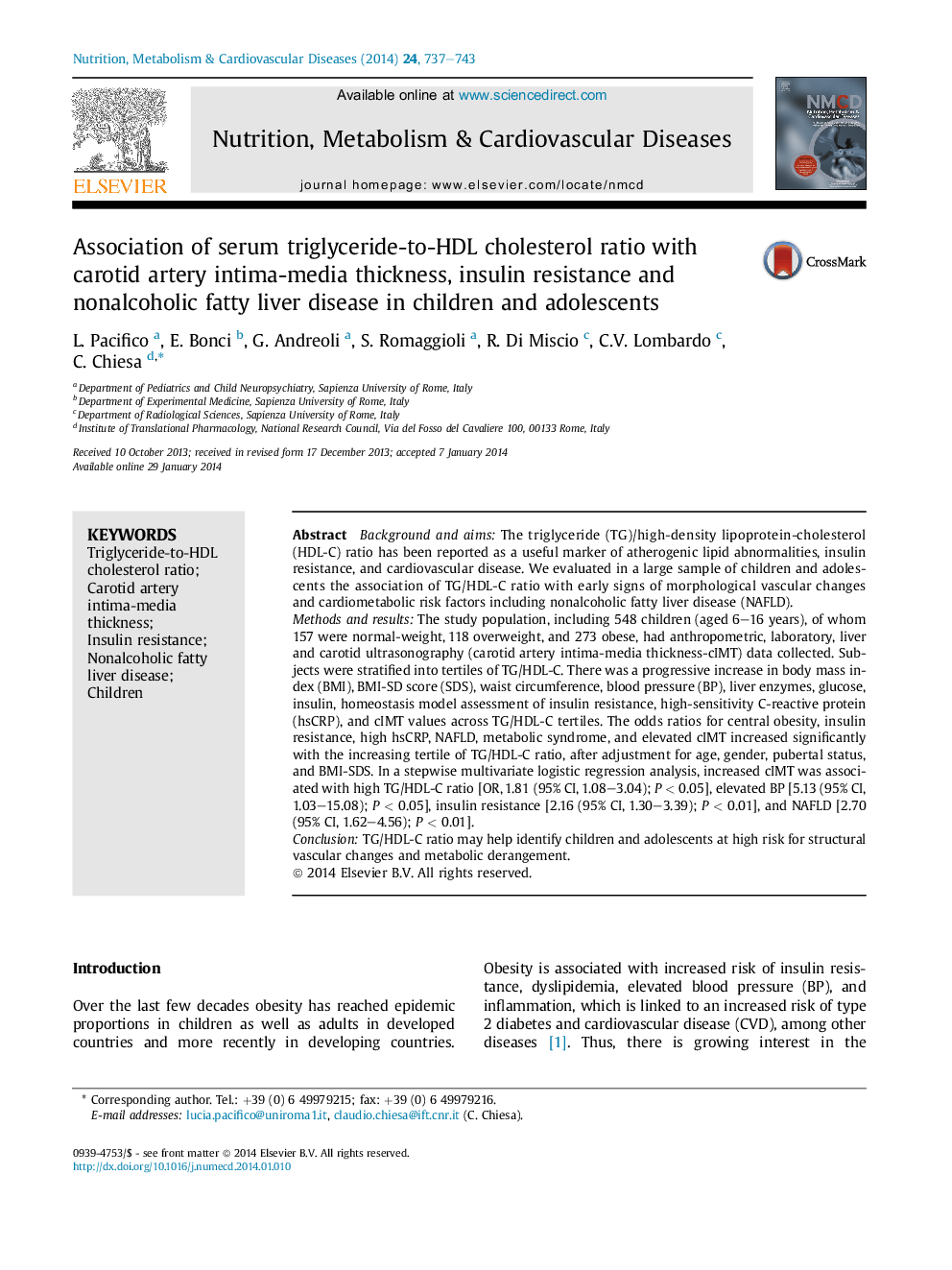| Article ID | Journal | Published Year | Pages | File Type |
|---|---|---|---|---|
| 3002083 | Nutrition, Metabolism and Cardiovascular Diseases | 2014 | 7 Pages |
Background and aimsThe triglyceride (TG)/high-density lipoprotein-cholesterol (HDL-C) ratio has been reported as a useful marker of atherogenic lipid abnormalities, insulin resistance, and cardiovascular disease. We evaluated in a large sample of children and adolescents the association of TG/HDL-C ratio with early signs of morphological vascular changes and cardiometabolic risk factors including nonalcoholic fatty liver disease (NAFLD).Methods and resultsThe study population, including 548 children (aged 6–16 years), of whom 157 were normal-weight, 118 overweight, and 273 obese, had anthropometric, laboratory, liver and carotid ultrasonography (carotid artery intima-media thickness-cIMT) data collected. Subjects were stratified into tertiles of TG/HDL-C. There was a progressive increase in body mass index (BMI), BMI-SD score (SDS), waist circumference, blood pressure (BP), liver enzymes, glucose, insulin, homeostasis model assessment of insulin resistance, high-sensitivity C-reactive protein (hsCRP), and cIMT values across TG/HDL-C tertiles. The odds ratios for central obesity, insulin resistance, high hsCRP, NAFLD, metabolic syndrome, and elevated cIMT increased significantly with the increasing tertile of TG/HDL-C ratio, after adjustment for age, gender, pubertal status, and BMI-SDS. In a stepwise multivariate logistic regression analysis, increased cIMT was associated with high TG/HDL-C ratio [OR, 1.81 (95% CI, 1.08–3.04); P < 0.05], elevated BP [5.13 (95% CI, 1.03–15.08); P < 0.05], insulin resistance [2.16 (95% CI, 1.30–3.39); P < 0.01], and NAFLD [2.70 (95% CI, 1.62–4.56); P < 0.01].ConclusionTG/HDL-C ratio may help identify children and adolescents at high risk for structural vascular changes and metabolic derangement.
